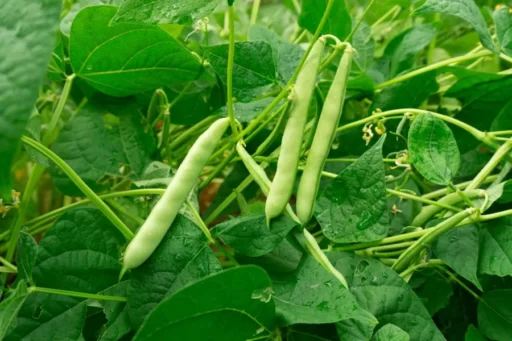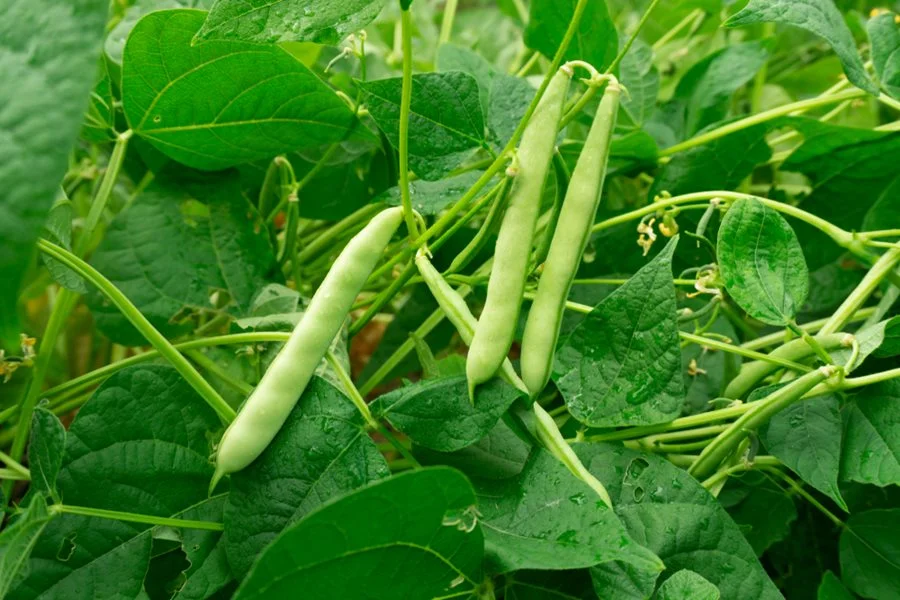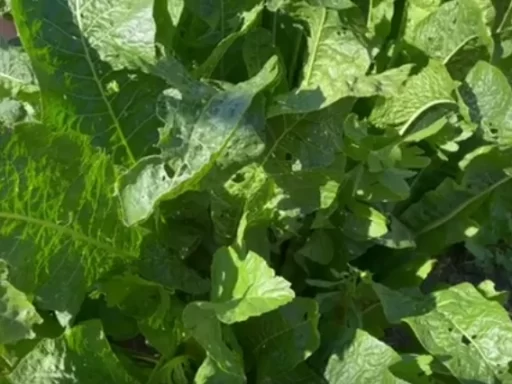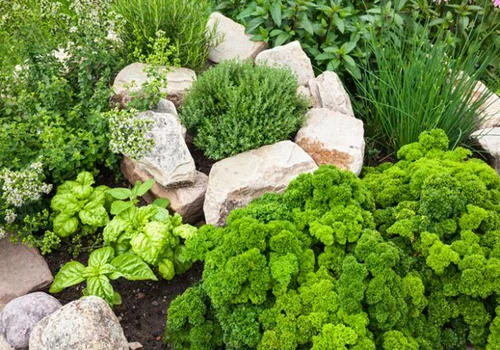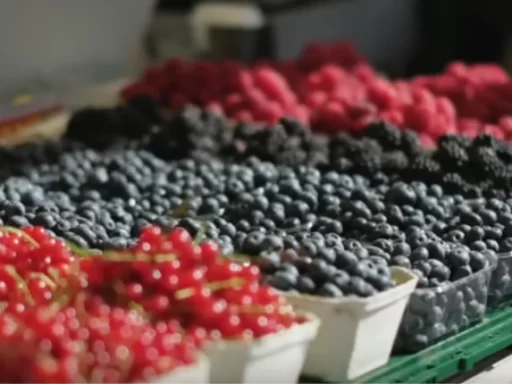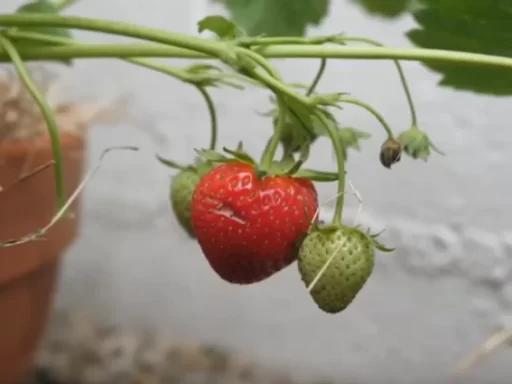Climbing beans, also known as pole beans or runner beans, are a summer favorite for gardeners around the world. These versatile beans bring not only an abundance of harvest but also add a beautiful touch to your garden. In this guide, we’ll go over the seven essential steps to grow perfect climbing beans every time. Whether you’re a seasoned gardener or a beginner, this article will provide you with all the information you need to ensure a successful bean crop.
1. Choosing the Right Soil
Climbing beans thrive in nutrient-rich, well-drained soil. It’s important to select a location in your garden that gets at least five to eight hours of direct sunlight daily. The beans need warmth and sunlight to reach their full potential, so choose a sunny spot for planting.
Before planting, enrich the soil with organic matter like compost or well-rotted manure. Spread about 2 inches (5 centimeters) of compost on the surface, allowing it to integrate into the soil for a couple of weeks before planting. If you’re gardening in a hot or dry climate, you can dig compost trenches or pits. These are made by digging a trench, filling it with compostable materials like kitchen scraps, and covering it back with soil. This helps retain moisture and enrich the soil.
Key Tip: Prepare your soil in advance by working organic matter into it. The better the soil, the healthier your beans will be.
2. Germination: Timing Is Key
Green beans require warmth for germination. If you plant too early, the seeds may rot, or you may get weak seedlings. The soil temperature should be around 45°F (7°C) or warmer for the seeds to germinate effectively.
For warmer climates, you can sow the seeds directly into the soil. In cooler areas, it is recommended to start beans indoors in pots or plug trays for more reliable germination. Plant one bean seed per plug about an inch deep, and once the soil has warmed up, the beans should germinate within two to three weeks.
If you get two seedlings per planting hole, thin them out by leaving the strongest seedling in place to prevent overcrowding.
Key Tip: Wait until after the last frost before planting your beans outdoors to ensure strong germination.
3. Supporting Your Climbing Beans
Climbing beans, as the name suggests, need strong support to grow tall. You’ll want to install supports that are at least 6 to 7 feet (2 meters) tall. You can use A-frame supports or teepee-style structures, which are ideal for windy gardens as they help deflect strong winds.
Decorative arches also make great supports, adding an aesthetic touch to your garden while providing the beans with the vertical space they need to thrive. As your bean plants grow, they will naturally wrap around the supports. However, if they stray too far, you can gently guide them back onto the structure.
Once the vines reach the top of the support structure, pinch off the growing tip to stop further growth. This encourages the plant to focus on flowering and pod production, leading to a better harvest.
Key Tip: Install sturdy supports before planting to prevent wind damage and help your beans grow tall and healthy.
4. Watering: Keep Your Beans Hydrated
Proper watering is crucial for climbing beans because they grow tall and produce numerous pods. Water your beans deeply at least once a week and more frequently during hot, dry spells. Be sure to water the base of the plant to avoid wetting the leaves, which can encourage disease.
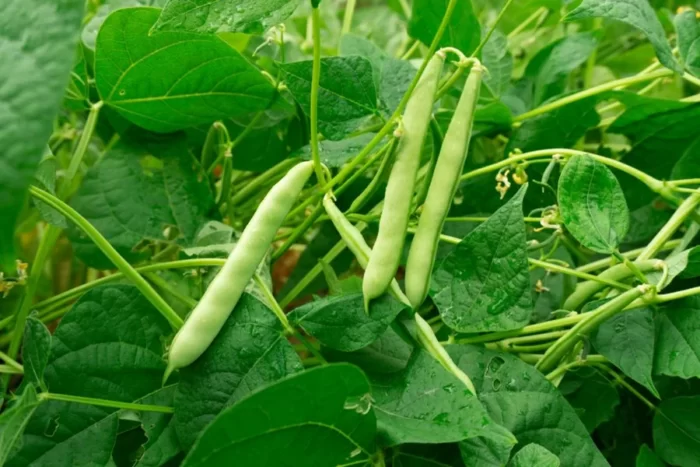
To check if your plants need water, stick your finger about an inch into the soil. If it feels dry, it’s time to water. Well-drained soil helps prevent overwatering, but you can never give climbing beans too much water, especially during their peak growing season.
Key Tip: Water deeply and regularly, especially in hot weather, to ensure your beans stay hydrated and productive.
5. Fertilizing and Pollination
Climbing beans belong to the legume family, which means they have a unique relationship with nitrogen-fixing bacteria in the soil. This reduces their need for nitrogen-based fertilizers, but they still benefit from nutrient-rich soil.
If your beans appear yellow or weak later in the season, a liquid fertilizer such as a tomato or vegetable feed can give them a much-needed boost.
To ensure successful pollination, plant nectar-rich flowers like marigolds, cosmos, or nasturtiums near your bean plants. These flowers attract pollinators such as bees and hoverflies, which help your beans produce a bountiful harvest.
Key Tip: Interplant nectar-rich flowers with your beans to improve pollination and yield.
6. Protecting Your Beans from Pests
Common pests that attack climbing beans include slugs and aphids. Slugs tend to eat young bean plants, so starting your beans in pots can give them a head start. Slug traps filled with beer can help control their population.
Black bean aphids (or blackfly) usually gather on the tender new growth at the tips of shoots. If you spot them early, a strong jet of water can wash them off. As the season progresses, natural predators like ladybugs will help control the aphid population.
To avoid fungal diseases, remove dead or dying leaves and ensure your plants have good air circulation.
Key Tip: Regularly check your plants for pests, especially slugs and aphids, and take preventive measures early on.
7. Harvesting: Pick Often for More Beans
The key to a continuous bean harvest is to pick your beans regularly while they are still young and tender. The more you pick, the more the plant will produce. If beans are left to mature, the plant will slow down or stop producing altogether.
Yellow or purple bean varieties are easier to spot against the green foliage, reducing the chance of missing ripe beans. By growing multiple varieties, you ensure a continuous supply of beans throughout the season.
Key Tip: Harvest your beans frequently to encourage the plant to produce more pods.
Frequently Asked Questions
- When is the best time to plant climbing beans?
The best time to plant is after the last frost when the soil has warmed to at least 45°F (7°C). - How tall do climbing beans grow?
Climbing beans can grow between 6 to 7 feet (2 meters) tall, depending on the variety and growing conditions. - What type of soil do climbing beans need?
Climbing beans prefer well-drained, nutrient-rich soil with plenty of organic matter. - How often should I water climbing beans?
Water at least once a week, and increase watering during hot or dry spells. - What pests should I watch out for?
Slugs and aphids are the main pests to watch for, especially early in the growing season. - Do I need to fertilize climbing beans?
Beans generally need little additional fertilizer, but a liquid feed can help if the plants look weak or yellow. - How often should I harvest my beans?
Harvest regularly, at least every few days, to encourage continued production.

